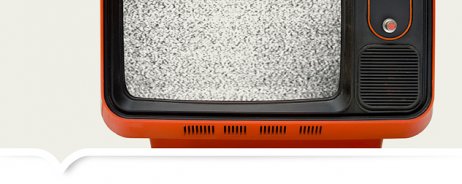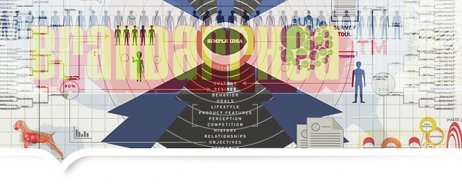Insights
Selling simple.
If there is one thing a wonky economy does to marketing, it's to create the desire to try and be all things to all people.
The logic goes something like this:
A.) Our sales are slowing,
B.) Therefore, we need to appeal to a broader target,
C.) So, let’s make sure we cover everything in our messaging.
But what seems logical is not practical. New marketers tend to believe that you can present the facts (all of them) and get the desired response. However, there is a counter-intuitive truth in successful marketing. This truth is that the easier you make your message — the more understandable and digestible — the more likely someone will make a decision and/or take action.
So, when things begin to slow, the logic should go something like this:
A.) Our sales are slowing,
B.) Therefore, we need to appeal strongly to our target,
C.) So, let’s make sure we communicate our benefits simply and clearly.
Our job is to make the decision easy, even when people are uneasy about the economy. So, we need to make it simple by taking away all of the noise, all of the issues, all of the uncertainty, and make the decision to choose our product or service an easy one.
It’s sometimes tempting to include everything in a message. But ultimately, making the decision complicated during complicated times, just makes the decision easier to avoid.
What are you putting first?
All great business leaders know that in order to succeed in business, you have to lead or be first: First to market, first in technology, first in product development. And to be successful in communications, you have to be aware and understand some other fundamental “firsts.”
Target first: There is no way to emphasize this enough – businesses that lose sight of their customers, fail. Sometimes this is attributed to “market changes” but what actually changes is people. (More importantly, the people who are buying your product.) You do not determine if your business succeeds or fails, people do. Never lose sight of this fundamental fact or you too will wonder, ”how can we be shrinking when we have such a great product?” When you develop your communications, know and understand who needs to act to bring you success. Get to know this person as an individual before you begin creating your communications campaign.
Benefits first: Once you know your target “person,” figure out how you are going to improve his or her life. Will you provide more time for them to spend with their family, let them keep more of their money, or make an unpleasant experience enjoyable? And keep this in mind: this isn’t what your product or service can do, it’s how you make your target’s life better, whether it be big or small. It’s not your product, it’s their benefit. (Our favorite metaphor for this is that people aren’t buying drills, they are buying the holes.)
First impression: Even great businesses lose sight of the simple, undeniable fact that a first impression can’t be taken back and is so foundational. So, don’t rush it. Before an important presentation, most of us are concerned that our appearance, information, and everything we want to communicate is spot on. We know that this first presentation will define how we will be perceived for a long time. But surprisingly, people don’t put this same thought and foresight into communications that may be seen by thousands of people. Just make sure you do the same planning before you craft your communications. Is the message simple, meaningful and truthful? Does it look and feel like you? Make it your own and make it great. Don’t copy others or just slap it together. If you’ve put your target first and understand your benefits, this won’t be as difficult as you think.
Being first in your business requires being first in many aspects of your business. So what are your firsts?
Working in the advertising time zone.
Successful campaigns require a lot of thought, creativity and talented people to bring them to life. But one of the most overlooked elements is patience.
In advertising, it’s all too common to hear, “that’s not working, let’s do something else.” It’s the marketing equivalent of “I want it now.”
This can happen just days or weeks into a campaign. You’ll hear it from people who do not understand that a consumer decision is not just an action, but rather a process that sometimes takes moments, hours, months or even years.
Most success in advertising requires time to gain momentum and move consumers through a decision, or prepare them for when they will be making a decision in the future.
If you’ve built a strong, smart campaign that communicates a clear benefit and find that it’s initially producing little or no short-term results, give it time.
The results will come.
Talking to your target audience, one person at a time.
We’ve always felt that advertising should feel like a conversation between a brand and a person. The best examples of persuasive communications are usually designed to connect to a single individual, even in political speeches written for the masses (“Ask not what your country can do for you...”).
Often in the attempt to talk to a target audience, advertisers can succomb to thinking of their consumers as a literal mass of people instead of a collection of individuals. The advertising messages get crafted for a “they.” The problem with this approach is that, with some exceptions, there really is no “they” reading your ad, visiting your site, listening to your radio spot or watching your commercial. There is only a person (or a succession of many individuals) who will come across your messages.
As part of the strategic process we do with our clients, we ask them to think of a certain key individual (usually their best customer) when thinking of their offering. The idea is to guide the thought process to this insight: “My brand would succeed even more if I just had more customers like this key person.”
So what would that one key person want to hear from your brand in order to compel him or her to take action? That’s the start of your conversation with each one of your future customers.
When looking forward leads to backward thinking.
Every smart advertiser knows that in order to succeed, you are constantly looking ahead with key questions in mind:
• What are we going to accomplish?
• How can we anticipate people’s wants and needs?
• How is the fundamental relationship changing between our product/service and customers?
These core considerations should always be top-of-mind as you maintain, manage and create campaigns designed to accomplish your objectives. However, looking ahead too far when it comes to tactics is an error we see repeatedly. Especially when it comes to new digital channels, social media and tactical options that may not be based in reality.
The desire to implement cutting-edge communications quite often supersedes the common sense of focusing on your objectives, the target audience and what makes your product unique. Add to that the seductive lure of instant tracking (as opposed to long-term ROI) and you have a recipe for wasted resources.
Digital and social media options are growing and can be extremely effective when implemented at the right time, with the right audience and adhering to your core brand premise.
But, plan your tactics to the reality of your identity, target audience and the actual use of mediums and channels at the time of the campaign, or you might find your career having a Second Life.
Insights about insight.
When most people see or hear a true insight about people, it resonates. Famous leaders, philosophers, writers and comedians are gifted at identifying a simple human truth and then explaining it in a way that we all nod, smile and think, “that is so true.” Usually these insights are not merely clichéd generalities, but offer something more piercing into the human condition.
Age is an issue of mind over matter. If you don't mind, it doesn't matter.
Being an intellectual creates a lot of questions and no answers.
Behind every great man is a woman rolling her eyes.
At the core of every great advertising campaign is an equally simple, compelling truth about the people we are trying to reach: our target audience. The hard part is getting to it. Because we can’t just find any human truth, we have to find a human truth that is addressed in some meaningful way by our client’s product or service.
The insight is there, somewhere, but to reach it you almost always have to do an extraordinary amount of work, an incredible amount of listening and be extremely disciplined so you don’t get distracted or mislead into false conclusions.
Insight is the most valuable part of your marketing strategy. It elevates your brand experience beyond the merely transactional and into something meaningful.
The devil is in the body copy.
"Nobody reads ads. People read what's interesting. Sometimes it's an ad." Famed advertising copywriter Howard Gossage's timeless words serve as a guiding reminder to those of us who create messages, and to clients who pay agencies to shape them.
Advertising is interruption. We are the distraction between pages of Entertainment Weekly, the banner ad above the compelling online news story, the commercial before the wrap-up on CSI. No one seeks our messaging, but we must find interested recipients nonetheless.
The key is in being meaningful and relevant, no matter where your message runs. Too often, advertisers respond with the wrong solutions: Be louder. Get attention no matter what it takes or costs. But these solutions only build consumer resentment and resistance.
When in doubt, remember Gossage: Stand for something. Be clear.
But most of all, be interesting.
Ready, set, stop.
We often find ourselves in an interesting business contradiction: recommending that our clients not advertise. This happens for many reasons, but it is usually when clients are just getting started or are creating a new offering. It is always because we don’t believe that we can achieve the desired results. If you’re not sure if you’re ready, here’s a short list to consider.
Don’t spend money on advertising when:
Your product, service or idea is not ready for prime time: We’ve been asked to create campaigns for software that hasn’t been tested, services that are outside a client's expertise, and even products that don’t yet exist. It comes down to this: If you want people to pay you for something, or take interest, make sure what you are offering will benefit them – now. If you want to succeed in the long-run, it has to work for people as promised.
You’re not ready for the interaction: If you aren’t ready to manage the sales process, wait until you are before you begin a campaign. This means that someone is answering the phone, your site is ready to take orders and/or your sales staff is ready to sell. Nothing will kill a campaign launch faster than disappointed customers who are having trouble doing what you are asking them to do: pay you money. In this era of open communication, a few bad interactions can stop your sales cold.
You don’t have enough resources to do it right: A campaign is a delicate thing. It is generally planned from the ground up and includes multiple integrated marketing elements that are designed to work together, creating the synergy that is required for a successful campaign. Don’t start with a comprehensive plan and then decide to just cut back. You might think you are simply saving money by cutting some of the tactics, but you might be cutting all of the synergy. Better to wait and do it right, or start planning your tactics over with a realistic budget, in order to make sure what you are able to do creates the synergy you need for it to work.
The success of a campaign depends entirely on what you are offering, how you are interacting with potential customers and your ability to make a campaign greater than its parts.
And when you're ready – go.
Elevating your category? Or levitating out of it?
We love great campaigns that take a simple, core idea and make people stop and think about that idea for a minute. But sometimes there can be a fine line between great campaigns and great campaigns that work. And the line between these is often drawn where the message connects the recipient to what the advertiser actually does. In your quest to stand out and lead the category, you must be careful not to elevate yourself right out of the category. You could leave your target wondering how you can actually benefit them.
Ads that leave the audience confounded often come about when an advertiser’s desire to stand out results in a campaign that is funny, dramatic or simply entertains with little regard for actually getting to the target benefit, or educating about what the product is. (Anyone remember the dot-com era of the late '90s?) When your company has something new that requires some explanation or you are trying to educate a new customer base, sometimes you have to bite the bullet and be responsible, doing a little more explaining than entertaining.
Don't get us wrong – advertising has to engage to register. But it all comes back to your simple idea. If you have a strong, unique, simple idea that is based on your target and how you benefit them, this will lead to communications that are simple, strong and balance the personality and positioning naturally. With a little thought up front, a great campaign can simultaneously entertain while informing. And you won't go over the heads of the people you most need to reach.
How not to complexify your life.
Every once in a while we get the opportunity to see other folks in our business present themselves to prospective clients. We see this as a great opportunity to learn and improve. We recently encountered a competitor presenting themselves in a unique way: By making their approach, process and deliverables as complex and mind-numbing as possible. There were brand cohesion graphs, there were social integration flow charts, there were long titles, and in the end, there was nothing for this prospect to grab onto or make memorable.
It was an important reminder that nobody, in their personal or their business life, has ever said, “I need to complexify my life.”
You’ve also never heard:
“I really like the way that commentator made that idea hard to understand.”
“I enjoy speakers who talk a long time before making their point.”
“I wish the beer ads in the Superbowl would spend more time explaining the fermentation process.”
We often sound like a broken record when we say it, but it is very near to our hearts, and something we work to do every single day. From your overall strategic direction, to the creative premise, to a Facebook post, to a single ad in a single medium, you should be endlessly asking, “how can we make it simpler?"
Simple is power. Simple gives you impact. Simple leads to action.
Simple is success.
Are you a simplifier, or a complexifier?













